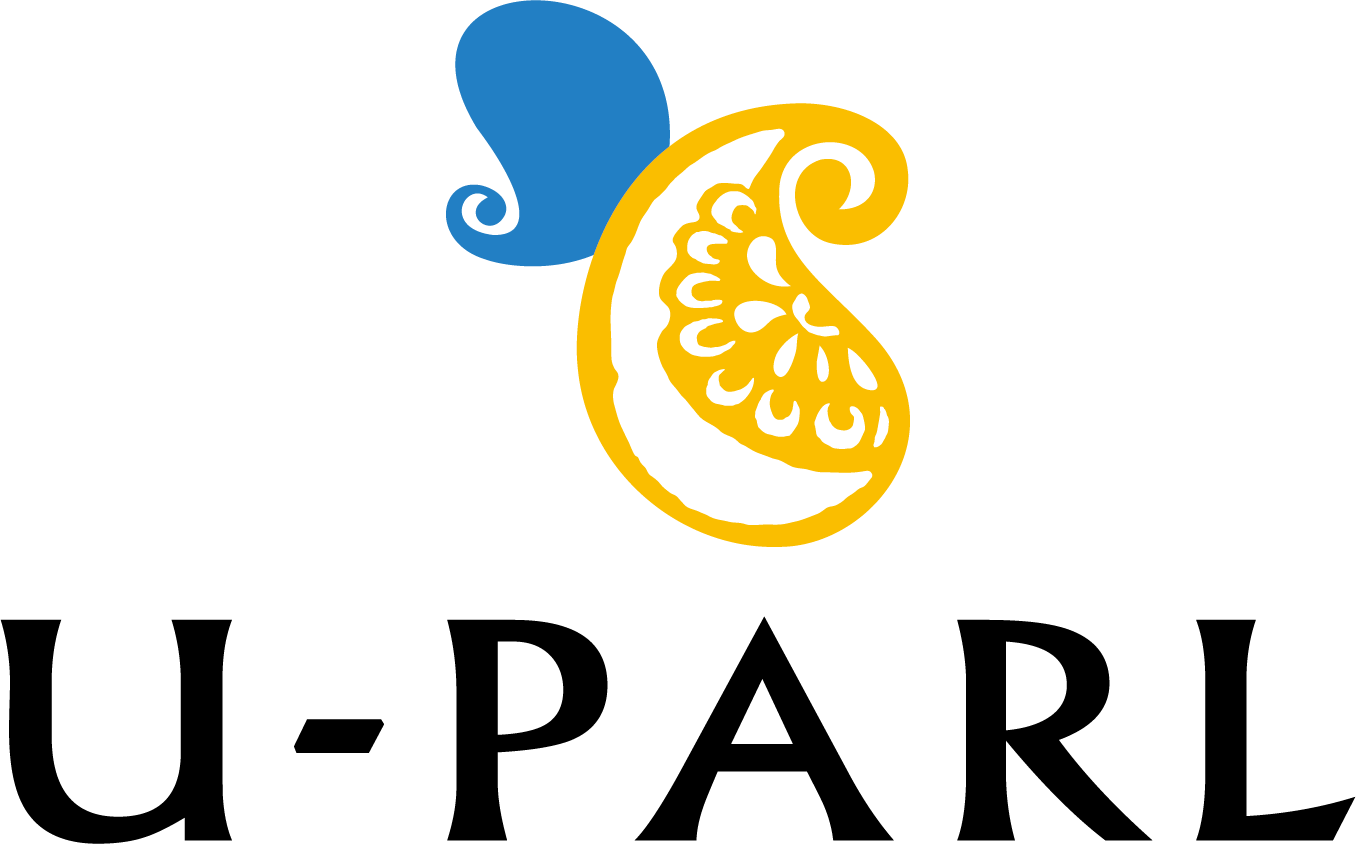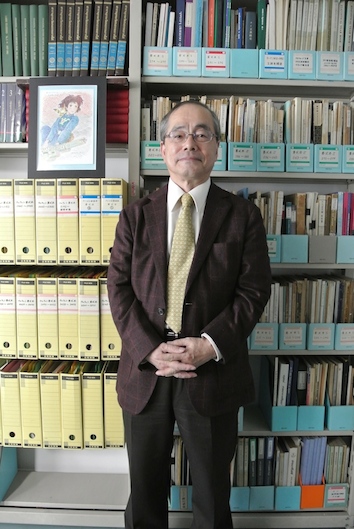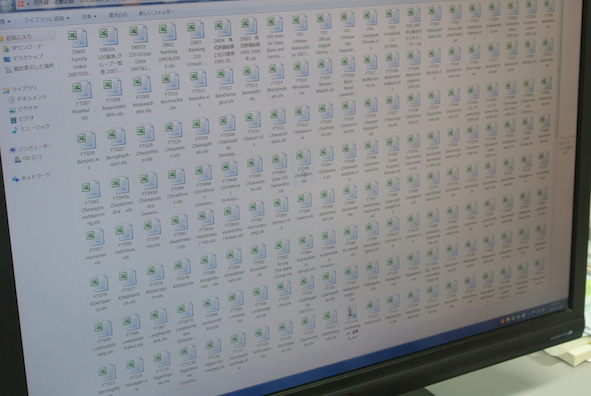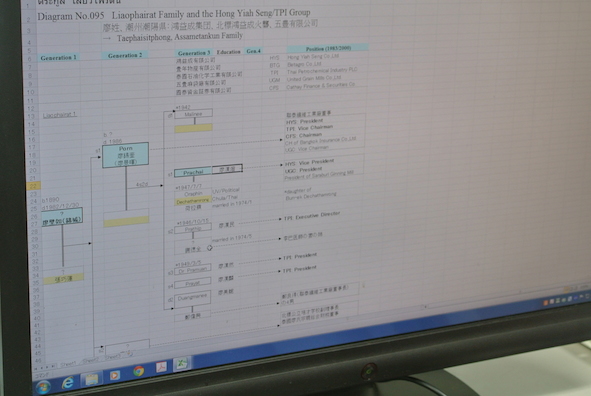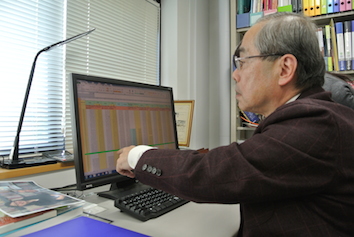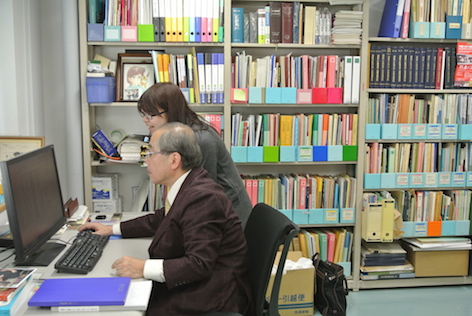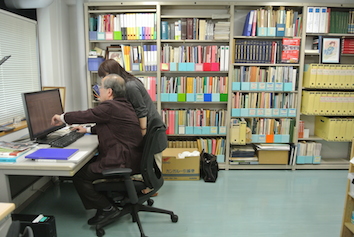Akira SUEHIRO
U-PARL Concurrent Professor, Institute of Social Science
This article is reprinted from UP (March 1995) by courtesy of University of Tokyo Press
What Are “Cremation Volumes”?
In Thailand there is a type of book known as “distributed book (nangsue jaek) “. These books and booklets are handed out to participants and acquaintances when there is an event, primarily such as a funeral, but also at 60th birthday celebrations and home buildings. Amongst these, in terms of numbers, those handed out at funerals are far more common. When someone talks “nangsue jaek” in Thai it usually actually refers to “nangsue jaek ngaan-sop” or a cremation volume.
There are people that mistakenly believe these cremation books to have come out of the Buddhist tradition of praising the merits of the deceased and making offerings for the wellbeing of their souls. At the same time, there are others mistake this as being a shared tradition with China. However, the publication of these cremation volumes is not common in Buddhist countries, and this practice is not seen amongst Chinese people (or Chinese expats). Cremation volumes are actually a thoroughly Thai tradition, and are products of unique culture relating to publishing activity.
Cover of the cremation volume for Prime Minister Field Marshal (Prime Minister’s Office edition).
The original form of the cremation volumes that one sees being created today can be traced back to the 1870s. At that time, a huge sum of money was being spent on the funerals of the royal family, aristocrats, and high-ranked royal officials (khun-nang). However, the funerals were not being held immediately after the person passed away, but rather, for the royal family and nobility a wake was observed for 3 months to a year (for the King, etc.), and their bodies were cremated after a variety of ceremonies had been completed. This is still the practice today.
On the other hand, during that time the Royal Archives was suffering from a lack of funds. They came up with the idea of having the bereaved family collect money together and act as a sponsor. Using this they took the handwritten letters and edicts, etc. that had been preserved and edited and typed them up. Thereby, they were able to make duplicates of important documents and widely distribute them. This is truly an idea worthy of Thailand’s reputation as a “land of letters.” Here we had a coming together of 1) the plans for publishing public documents with private funds and 2) the bereaved family’s very natural desire to honor the spirit of the deceased. This was the birth of the cremation volumes.
The Value of Using Cremation Volumes
In the early-period cremation volumes, the deceased person’s name did appeared on the cover and in the introduction but there was no abbreviated biography or mention of their activities at all. The most attention they got was a mention of thanks to the sponsor. However, after coming into the 1900s, there started to be many new variations.
For example, in the case of the royal family and nobility, the history of the family and an abbreviated biography and explanation of progression in official status, rank and title of the deceased started to be included in the introduction. Furthermore, instead of the editing and duplication of old texts, newly included was a detailed biography of the deceased and eulogies from relatives and acquaintances. These came to be distributed at the funeral. Then, this practice spread to the funerals of regular government officials and Chinese merchants and was no longer limited to royalty and powerful aristocrats. Needless to say, it was only those of high birth with the financial power to finance these books that had them made, and the practice did not extend to ordinary and poor citizens.
As a result, there are two different benefits to the use of cremation volumes that can be found today. The first is that they can be used to trace scattered historical documents and edicts, etc. that were revised and distributed as volumes by the Royal Archives and the Fine Arts Department (Krom Sinlapakorn) since 1911. This is precisely why those involved with researching Thai history have frantically gone out to collect these cremation volumes.
For example, diaries and office documents of King Rama V (Chulalongkorn the Great; died 1910) were sporadically published between the 1920s–1940s, for a total of 24 volumes, in the event of the funerals of his concubines and other members of the royal family. Likewise, “Annals of the King’s Reign” volumes for each of the kings from Rama I to Rama V were reproduced in the early period of cremation volumes, and some of these compilations themselves are treated as rare books (nangsue ha-yark).
Professor Suehiro’s drawing of anime character Nausicaä in front of his cremation volume collection.
New Discoveries of Historical Events
The other value of these cremation volumes is the ability to learn a great deal about not just royal family and aristocrats but also about personal networking and histories/lineages for a wide range of people from different races, social statuses, and occupations—including military personnel, engineers, Chinese merchants, and foreigners employed by the Thai government. This is the aspect of the books that personally interests me. Because they now number in the tens of thousands, the cremation volumes are extremely valuable in being able to explain “who’s who.” They are also of no little value in introducing people one would have never expected to find and in sharing important facts that had been lost to history.
Take for example the case of Setsiri Kridakorn (royal family member; 1880–1957). Between 1903 and 1904, he underwent training with the Japanese army in Japan, and after returning to Thailand he became the first chief of the Thai Army Ordinance Department and the first director of a modern weapons factory. This surprising fact was discovered in a cremation volume. Of course, no research work so far has mentioned this remarked military relationships between Japan and Thailand developing after the end of the Sino-Japanese war (1893-94).
Many of the cremation volumes contain not only a brief history of the deceased themselves but also include a description of the activities in which they were involved and a history of their government offices, etc. In the case of a person that used to work at the Ministry of Finance there is included a “History of the Thai Customs Office.” In the case of a Chinese merchant that worked in the sugar production industry, there is a “History of the Evolution of the Thai Sugar Industry.” These were newly written with, for example, the help of people outside academic circles. In the case of the cremation volume for a female clothing designer there is combined together a history of Thai fashion that spans 120 pages, detailed illustrations, and photographs. These sorts of examples are excellent research resources.
An excellent example is the cremation volume of former president and chairman of the Bangkok Bank, Chin Sophonpanich, who passed away in January 1988. To my understanding, there are four or more different types of cremation volumes dedicated to him but the most comprehensive of them is the “Bangkok Bank Edition.” Until then, Chin’s early life—during which he was playing a major guiding role in the Thai banking and financial sector—remained shrouded in mystery. There were even several different stories about the exact year of his birth. However, this Bangkok Bank edition does not just introduce a detailed story of Chin’s life, it also gives a detailed insider history of Bangkok Bank and the evolution of the banking industry as a whole in Thailand. In the field of Thai financial historical studies, this volume is doubtlessly the best one. Cremation volumes are not just a treasure trove of historical records and facts, they are also significant as abundant resources for research into the Thai socio-economic history.
Storage of the Cremation Volumes
The largest number of cremation volumes are stored at the Wat Boworn-niwet Temple in Bangkok where the present king was tonsured as a Buddhist monk. It is not clear quite how many books are there, but there are certainly more than 20,000. There is also a collection of over 1,000 cremation volumes of royal family, aristocrats, and King’s appointment officials at the library facing Larn Luang Road. The books including a large number of rare books are part of the private collection of Prince Damrongrachanuphap (Director of the Department of Education and Minister of the Interior during the reigns of Rama V and VI, and an historian of rare talent). Prince Damrongrachanuphap is also known to have written the introductions and abbreviated biographies for many cremation volumes.
On the other hand, when looking abroad, what catches one’s eye first is the “Charas Collection” at the Center for Southeast Asian Studies Kyoto University. Charas Pikul was known for his collecting of cremation volumes, and after his death, Ishii Yoneo (professor at Sophia University at the time in 1995; passing in 2010), then affiliated with the Center for Southeast Asian Studies, put a huge amount of effort into purchasing a massive collection of books and having them deposited at the Center. From the over 8,000 books, 4,000 of those are cremation volumes, and this boasts as being the biggest collection in the world outside of Thailand. The Thai section at the National Library of Australia (Canberra) and the collection at the University of Michigan (U.S.A.) are also famous, but neither of them holds a candle in terms of quality and quantity to the Charas Collection.
What’s more, cremation volumes are not sold in regular bookstores. This is because they are originally intended for distribution to individuals associated with the deceased. However, where there is demand, there will be supply, and second-hand bookstores have done a trade in both old and new volumes. In recent times, there are several second-hand bookstores that have outlets in the flea market that opens on the weekend at Chatuchak Park on the way to Don Muang Airport. In any case, the research of cremation volumes begins with regularly heading down to second-hand bookstalls, standing out under the blazing sun, pouring through the contents one by one, and slowly buying up one’s own collection. Although this is indispensable for research, the task requires quite a lot of time, money, and effort
The many data sets that were created based on cremation volumes, etc. Excel files completely fill the screen without a gap
Family lineage chart data that was created based on cremation volumes
Professor Suehiro instantly discovered the file he wanted from amongst the massive number of files and explained it for us—something that is only possible due to his systematic and careful file management
What We Can Learn from Cremation Volumes
Let’s take a closer look at the content of the cremation volumes. As I have already pointed out, there are many different types of cremation volumes. There some that have a two page biography of the deceased, and some have over 400 pages dedicated to them—a spectrum from rough to fine. In general, however, they share the follow kinds of information.
- Family details of the deceased, including: dates of birth and death, parents, siblings, marriage, and children, etc. Depending on the volume, it is not rare to find those appended with detailed family records such as a lineage chart or a 100 page-plus history of the family. Judging from cremation volumes, Thai royalty and nobility are as interested in family lineage as Japanese people are. And, it appears to also be a recent trend amongst those of Chinese descent to research one’s family roots.
- The educational attainment of the deceased, including: schooling history from elementary (including education at Buddhist temples) through to university, in addition to study abroad experience. At the same time, there are many volumes from which it is also possible to learn about the atmosphere of schools during that period and study abroad situations from reminiscences written by the deceased and eulogies written by friends.
- Details on changes in occupation, social status, and economic activities. In the case of government officials, especially, changes in royal titles given by the king (bandasak), official names (phrathin-na-nam), and official statuses (thamnaeng) are outlined in careful detail by year, month, and day. The same is the case with the military and one can observe changes in rank and status. Also detailed is information on the founding of, and changes in organizational structure to, government agencies and companies with which the deceased was connected.
- History of distinguished service medals, etc. from the king and acts of endowment or donation. Thailand is a “medals-based society,” so detailed records of awards such as these, great or small, are never left out of any cremation volume.
- Changes in salary allowance (visible from the 1870s onward). In the case of government officials and military staff, especially, in addition to title, status and occupation there are many volumes that also detail salary increases by year, month, and day. In Thailand, before the announcement of the 1928 Civil Service Act, an individual’s salary level was decided by the either the King, the Minster of a given department, or a bureau chief. This meant that, even if people worked in the same department for the same working years, there could be big differences in salary depending on differences in social class and educational background or depending on personal connections. Research on salaries might just be the key entranceway to research on Thai socio-economic history.
New Approaches to Research on Thai Social History
Cremation volumes are, of course, interesting and valuable as works on their own; however, what should also be noted is their role in supplying bulk information on individuals across centuries in regard to various aspects such as status, education, and work history—or on progress in status and work history and on salary levels. In studying Thailand from the perspective of it being a class society, cremation volumes are an outstanding source of information.
If it is the case that Japanese historical demography evolved through research into Edo Period temple census records, and that the French scholars of the Annales School delivered results through explorations of late medieval and early modern Church registers, it may be that carving a new way forward in the study of Thai social history begins with a thorough analysis of the cremation volumes.
However, research into cremation volumes takes time, and more than anything else, what are indispensable are two: 1) the backlog of knowledge needed for pulling out useful information from within the countless numbers of volumes and 2) a wealth of historical imagination. It really is fulfilling work and whenever I can find the time I continue to input information on individual’s history and salary, etc. into my computer database. It is the sort of task that seems never-ending, but at least in regard to the title of the book I am hoping to write in the future, that much is decided: Sōshikibon ga kataru Tai no sekai, “The World of Thailand Depicted in its Cremation Volumes.”
Prof. SEHIRO explaining his database
Prof. SUEHIRO absorbed in explanation
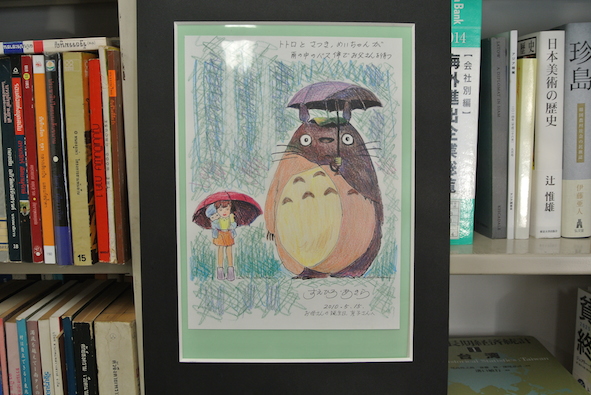
TOTORO drawn by prof. SUEHIRO
